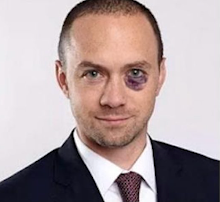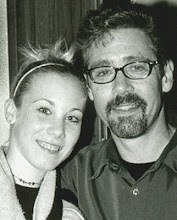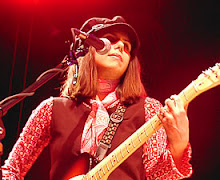 I don't have a background in economics or sociology, but I know that the term social capital refers to the value of meaningful human interaction-- cooperation, understanding, building trust, bridging social gaps, easing ethnic tensions. High social capital strengthens a community. Low social capital leads to an intolerant and corrupt society and citizens who are apathetic about their local government. It becomes difficult to identify problems and find solutions. Crime increases. The concept of social capital has been obscured by our current economic panic.
I don't have a background in economics or sociology, but I know that the term social capital refers to the value of meaningful human interaction-- cooperation, understanding, building trust, bridging social gaps, easing ethnic tensions. High social capital strengthens a community. Low social capital leads to an intolerant and corrupt society and citizens who are apathetic about their local government. It becomes difficult to identify problems and find solutions. Crime increases. The concept of social capital has been obscured by our current economic panic.Community arts events and artist groups help to build social capital which can result in actual capital for a city. Therefore, cultural events should not be eliminated when a city is struggling. The arts should not be viewed as just peripheral activities in a city.
A 1996 study found that two thirds of all major city arts agencies in the US were involved in crime prevention, 9 out of 10 involved in helping at risk youth, 9 out of 10 involved in raising cross-cultural awareness (Source: United States Urban Federation, June 1996 Report on the Arts Councils in the 50 largest US cities). So putting the arts on the back burner is not a good idea if a city wants to improve. Smart government leaders can see the interconnectedness and synergy of it all, and the value of the arts. It's more than just pretty pictures for your walls, and it's not just a luxury reserved for the wealthy class.
In Italy, a study of Italian regional government found a strong relationship between the number of choral societies and the effectiveness of government. Apparently, communities that sing together are happy with their government! (Source: Robert D. Putnam, Making Democracy Work, 1993.)
There is a mountain of evidence that arts programs keep kids safe, prevent crime, and beautify shabby neighborhoods.
Art also brings joy to people's lives, and joy makes us more willing to reach out and connect with each other. (Source: Michael Argyle, In Pursuit of the Quality of Life, 1996).
When people attend a cultural event or join a community arts group, they can discover shared understandings. When they participate in creating art, music, or dance, they can learn from each other, become more accepting of differences, respect each other more, and build friendships. The arts are unique in that way.
Dollars and cents aren't the only way to define a successful society. For example, in Canada they developed "Canada's Genuine Progress Index"(GPI) which is a measure of national well being > http://www.gpiatlantic.org/gpi.htm It has five parts: time use (volunteerism, housework and childcare, leisure time), natural capital, human and social capital, human impact on the environment, and living standards. Perhaps we should develop something like this in the U.S., because the GDP (Gross Domestic Product) does not measure human well being.
The GDP shows how much income we produce, but not how it is distributed-- and we know there has been a growing gap between the rich and poor in America.
Bob Lynch, President of Americans for the Arts, estimated that 10,000 arts organizations in the U.S. will close their doors this year. That's 10% of all arts organizations. Maybe during tough economic times, the non-profits and the arts institutions need to find new ways to demonstrate the value of the arts. Perhaps a model for assessing social capital is needed. People will spend time and money on something they feel is valuable in their lives.
I believe we need to create more social capital. Here are 150 things you can do to help create more social capital in Allentown > http://www.bettertogether.org/150ways.htm
Photo: HALA Community Mural at 5th and Gordon Sts., Courtesy Allentown Good News Blog




![Irv Muchnick, Concussion Inc. [The Only Honest Reporting on Martin vs Villa/SLAPP]](https://blogger.googleusercontent.com/img/a/AVvXsEjPD2coV7RQATuCUf-3rw1R677yxUImhkVfkwctN91m7yfi3nNdoiPeWor3ZFheb8-GpJgZmYhLB110qFaj3cJ-Chizn5_-t0OCc58nBiQZ8ExJNvSonqN7DCj2ETWDi4Wy0_OObaC3JgJ5_i8VJtUJ3RFDUDQf0VyiSghcV4xshIX6yCIdMs4SUh6t=s220)

















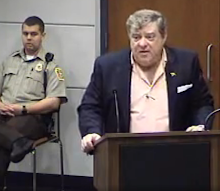









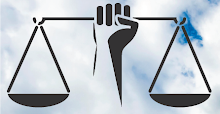
![[Reneged] City Solicitor Kloiber Bans Cousin Jeffrey Anthony Defamation & Harassment of Villas](https://blogger.googleusercontent.com/img/a/AVvXsEjrGZtm_TCRriA3DHGTVASeEr_XIZD_pQqaf-fCuaf2k-ApQAze7ZAeVU-I6gHcE8Tt6WXadtqw_hAOHjaJe11PiUx2MPPSCMN-MC5RBeCcjKX_DjAhw7IS0eWcKGimIJ9oImiqAkx3jw5l6mT-LnUEQ3U2JmCZyik1BNyiLbXmHr-MSBjt3fMiO6k4=s310)











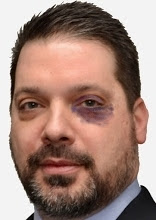


















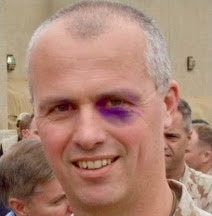

![[Reneged] Villa Defense Witness: "Judge" Anthony](https://blogger.googleusercontent.com/img/b/R29vZ2xl/AVvXsEilEA5zRbHJ2QZAT9qDc0rbK8z4aAEOKvk_sodBrrul56cu0MeXGjYPqfiUm1BuTWqDQakCDdKpcM6ozIrgcLLpHcBTlXWl5yC2ODubS5_xHNDtieJnNg-ucIejp3eZORHRROmETUoFGKiW/s220/10653495_508198589366170_7055316366826361693_n.jpg)




































